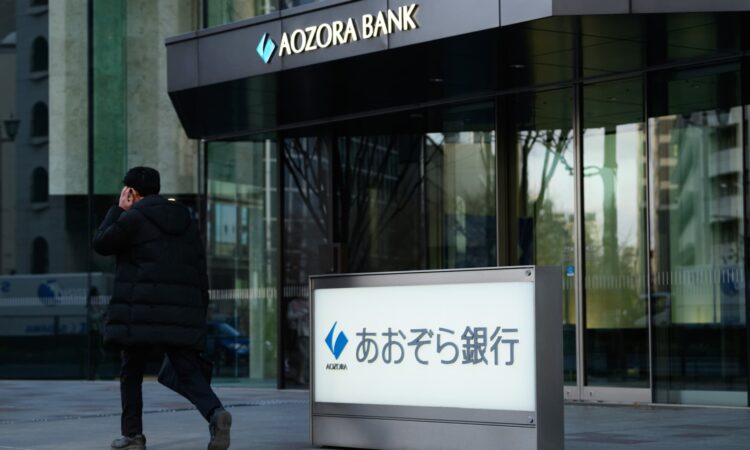Japan’s Aozora Bank hits near 3-year lows as bad U.S. property loans prompt loss forecast

The Aozora Bank Ltd. headquarters in Tokyo Japan, on Thursday, Feb. 1, 2024. Japan’s Aozora Bank became the second lender in a span of hours to surprise investors with losses tied to US commercial property, sending shares down by the limit and heightening concern over global banks’ exposure to souring real estate bets.
Akio Kon | Bloomberg | Getty Images
Aozora Bank shares hit near three-year lows Friday, as investors continued to hammer the Japanese commercial lender after it downgraded its annual outlook to a loss on bad U.S. commercial real estate loans.
Aozora, which had earlier forecast a profit, saw its shares plunge by as much as 18.5% to their lowest levels since February 2021 in early Friday Tokyo trade — the Nikkei 225 benchmark was up 0.5%.
The bank’s Tokyo-listed shares fell for a second day, tracking losses in U.S. regional lenders overnight.

Aozora Bank tumbles again
The commercial lender said Thursday it expects to post a net loss of 28 billion Japanese yen ($191 million) for the fiscal year ending March 31, compared with its previous outlook for a net profit of 24 billion yen. The bank forecast a net profit of 17 billion yen for the next fiscal year.
“Aozora is a major mid-tier lender whose strength lies in its relationships with real estate/business revitalization financing companies and regional financial institutions,” Goldman Sachs analysts wrote in a Friday note.
They retained their sell rating on Aozora’s shares with a price target of about 2,460 yen per share, mainly due to the short to medium outlook for the bank’s profits.
Aozora said Thursday it expects its Common Equity Tier 1 ratio, which compares a bank’s capital against its assets, to fall to 6.6% by the end of the current fiscal year, temporarily dipping below its 7% target.
“There have been some concerns in recent years over a decline in the CET1 ratio due to deterioration in U.S. commercial real estate credit costs and valuation losses on available-for-sale securities,” Masahiko Sato, a senior analyst with SMBC Nikko Securities, wrote in a Thursday note to clients.
“How this will impact other banks is another question,” Sato added. “U.S. real estate lending for around 10% of (its) total lending with a CET1 ratio of below 7% due to unrealized losses on securities has no precedent.”
Aozora’s update came shortly after U.S. regional bank New York Community Bancorp announced a surprise net loss of $252 million for the fourth quarter.
NYCB also slashed its dividend and said it had “[built] reserves during the quarter to address weakness in the office sector” — renewing some fears over the strength of U.S. regional banks, which were embroiled in a liquidity crisis last year.
The lender said this was in response to its purchase of the assets of Signature Bank, one of the regional banks that collapsed in last year’s crisis. That purchase raised their total assets to $100 billion, placing them in a category that subjects the bank to more stringent liquidity standards.
Bank of America analysts said in a Wednesday note that the sell-off in U.S. regional banking shares on contagion fears is “likely overdone given idiosyncratic factors tied to NYCB.”
“However, higher losses tied to commercial real estate office exposure, increase in criticized loans tied to multi-family CRE [commercial real estate] are a reminder of ongoing credit normalization that we are likely to witness across the industry,” Bank of America U.S. banking analysts wrote.
“It is worth pointing out that the credit/liquidity build at NYCB are mostly the bank playing catch-up to actions taken by larger regional peers over the last year,” they added.
— CNBC’s Michael Bloom contributed to this story.
